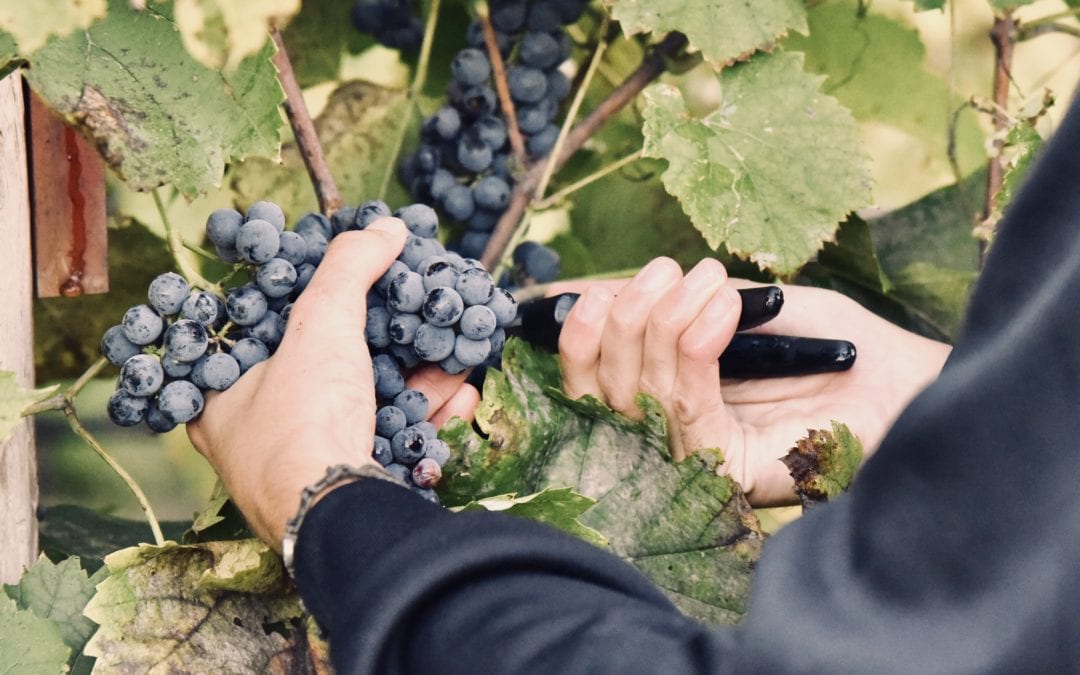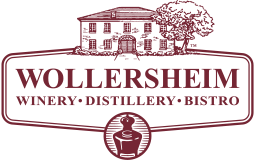With large amounts rainfall and a later start to the growing season, we weren’t sure what to expect from the 2018 vintage here on the slopes of Wollersheim Winery and Distillery. But with proper management, our unique site, a few tricks and an experienced team, we were pleasantly surprised by the quality of this year’s crop.
“Overall the quality was a lot better than I thought it may be, due to the excess of rain,” stated Philippe Coquard, Wollersheim’s 13th generation winemaker. “I am happy with the vintage all things considered. The flavor is there. The color is there.”
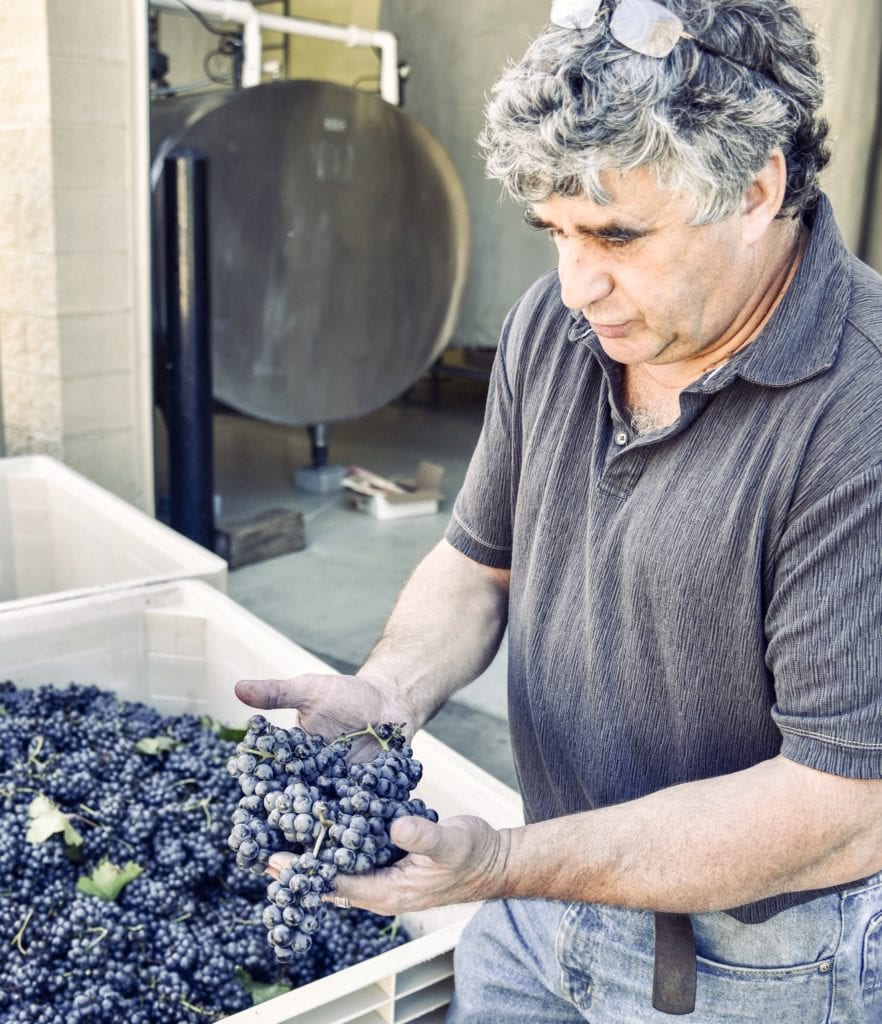
Winemaker Philippe Coquard inspects a handful of Wisconsin grown grapes.
There is little doubt that our ideal location served as a large part of our saving grace this season, as the sandy slopes of Sugar Loaf bluff shed rainfall much more efficiently than the flat, rich, black earth that makes up much of Wisconsin.
We also provided to the property a helping hand, when needed, using past lessons and new methods to keep our historic vineyard as dry as possible during the wet end of our growing season. One of the more noticeable techniques was using our wind machines (originally designed to help combat Wisconsin’s frosty weather) as make-shift blow dryers. We also used natural practices, such as keeping the vineyard grass long, which is intended to help slow down the moisture from entering the soil and the vine’s root system.
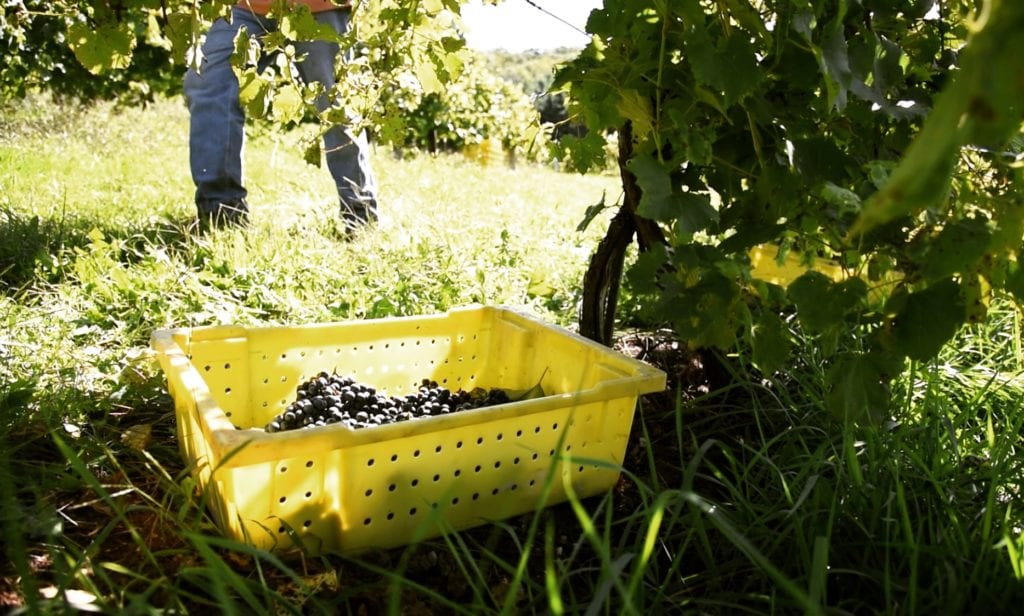
A bin of freshly hand-harvested Maréchal Foch grapes.
Another major key to the success of our vines this year was the crop management by our talented vineyard crew.
“This year, more than any other year, we did a lot of green harvest,” Philippe said. “Green harvest is going into the vine and removing the green or slow ripening clusters. We remove hundreds of pounds of these clusters. Sure, you lose some fruit, but I would rather have less of great quality than more of mediocre.”
Having slightly less fruit in a year such as this is actually a good thing. With less fruit hanging on the vine, the remaining clusters are able to properly ripen to make quality wine.
But what is most important to a successful harvest? According to Philippe, it’s “patience”.
“The biggest issue is patience. It’s knowing when is the right time to harvest,” Philippe stated. “This is my 34th year and it’s always a challenging decision of should I pick, should I wait, should I pick, should I wait. When you don’t have to worry about the weather you can really wait.”
In total, we harvested nearly 200 tons Wisconsin grown fruit. We hope you’re thirsty.
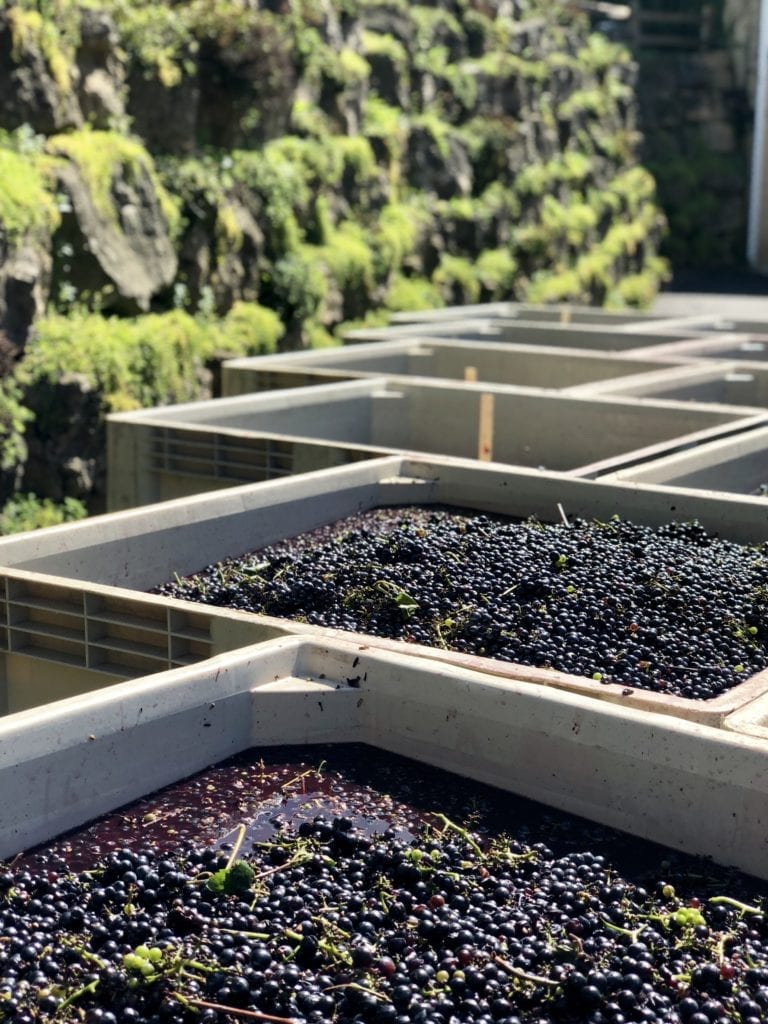
Bins upon bins of Wisconsin grown fruit.

